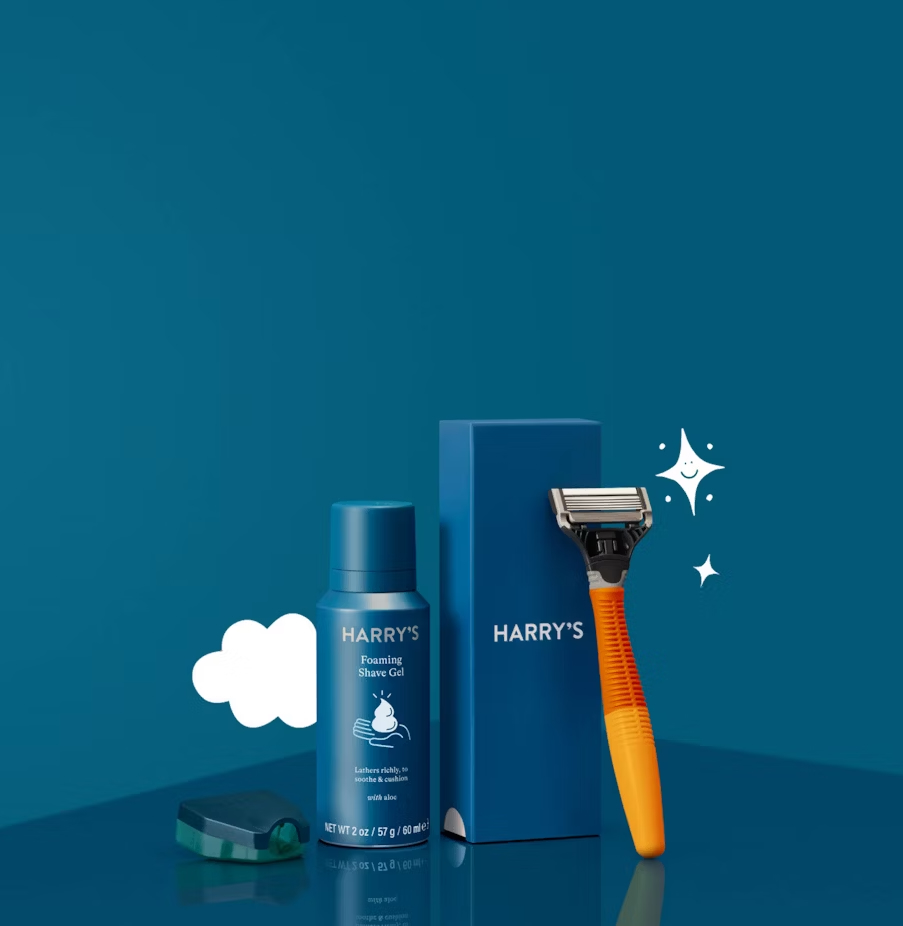I’ve heard a fair amount about ‘blanding’ recently – a term used to describe many new social-first and direct-to-consumer brands that have a kind of visual sameness about them.
It’s true that there’s often a recognisable thread that runs through many of these brands – pastel colours, a minimal design, often a very simple logo and lots of negative space. Examples include Harry’s the razor subscription company, Hims, which makes healthcare products, and Mylo, a fertility tracking brand. But really, there are hundreds of brands that have emerged in the last few years with a similar style.

Harry’s design is minimal with bold typography
Is it really fair to describe them as ‘blands’?
While there’s a similar aesthetic to many of these brands, I’m not convinced they’re as homogenous as it’s sometimes made out. Clean, simple design is of the moment and many so-called blands have their own take on the style, whether it’s with really gorgeous typography, fun illustrations, innovative packaging, or product photography that gives you a little thrill. Recess, who make adaptogenic canned drinks, have an amazing website experience with lots of unexpected touches. So a product or company might have a minimal brand design, but surprise you in other ways.
Recess’ website is full of surprising animations and visuals

When is a brand too bland?
Of course, it’s also easy for a brand to lose itself in a sea of sameness. Without quirks, eye-catching design features, or anything unique then there’s very little to read into. At our studio we believe a brand identity has to speak authentically about the business – otherwise there’s no way to make a real connection with the customer. We work to draw out the unique story of our clients’ brands and design a thoughtful, soulful identity from that place. If a minimal aesthetic is right for that brand, then that’s what we’ll create. If it needs to be rich and layered, or colourful, or exotic, we’ll design for that. The danger with blanding is that you have a design that’s pretty, but shallow.
As Sarah Drumm points out in this article for ThingTesting, brands need to focus on differentiating themselves and offering something extraordinary that keeps customers coming back, so they’re not just another pretty minimal face.
